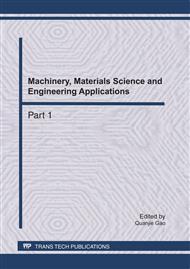p.537
p.542
p.548
p.552
p.558
p.563
p.568
p.574
p.580
A Micro-Machined Ceramic Hot-Plate for Gas Sensor Applications
Abstract:
A novel suspended ceramic hot-plate and wire-free bonding interconnection was investigated. The device was made on the popular alumina ceramic flakes with a platinum heater prepared by lift-off process. The structure of suspended beam was machined by laser micromachining technique. This contribution presents first results for single-layer’s ceramic hot-plates that include design, manufacturing and tests of such devices. The results show that the ceramic hot-plate has lower power consumption (280 mW at 400 °C) than classical ceramic gas sensors. Moreover, it has less expensive manufacturing and bonding process than Si manufacturing technology. Low power consumption and good performance at high working temperature (600 °C or more) makes it possibly to be used in some specific applications for gas sensors.
Info:
Periodical:
Pages:
558-562
Citation:
Online since:
April 2011
Authors:
Keywords:
Price:
Сopyright:
© 2011 Trans Tech Publications Ltd. All Rights Reserved
Share:
Citation:


